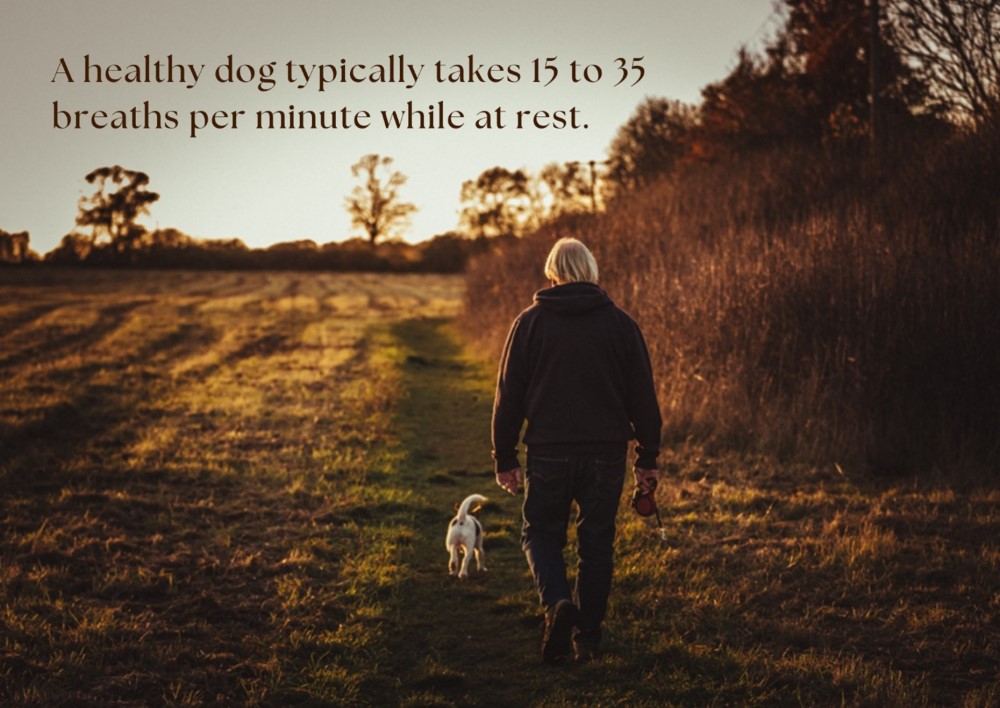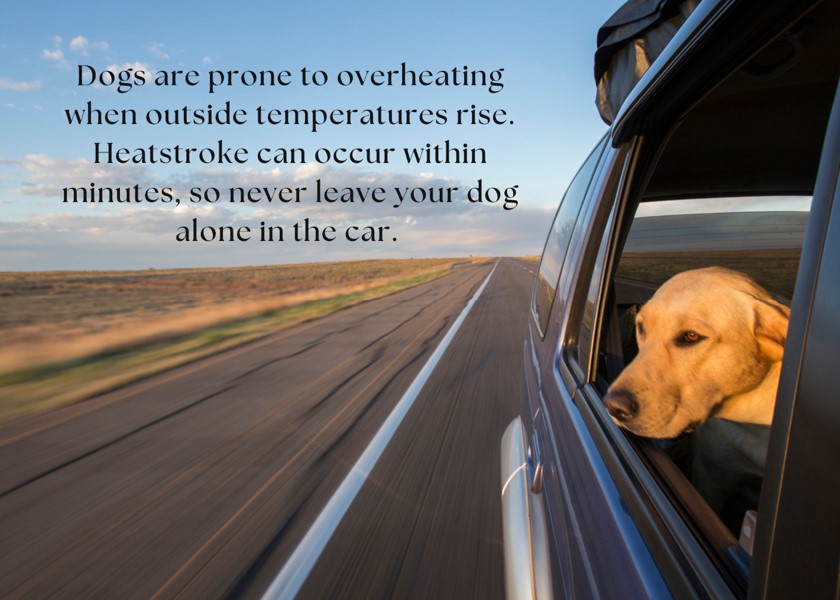If you think your dog is experiencing breathing difficulties, you have every reason to be concerned.
Rapid breathing or panting can be completely normal after, say, running, but there are instances where it can quickly turn life-threatening. As a pet parent, you need to be able to tell the difference between regular panting and difficulty breathing.
In this article, I will outline what normal breathing looks like and then teach you how to tell when dachshunds have breathing problems. We will also cover the common types of breathing disorders, their potential causes, and their diagnosis.
Most importantly, you will learn the symptoms of respiratory distress you must watch out for and what to do before an emergency veterinary visit.
What does Normal Breathing Look Like in a Dachshund?
Before we get into abnormal breathing and respiratory distress, it’s a good idea to get an understanding of what normal and healthy looks like.
The respiratory system in dogs work much the same way as in humans. Its primary goal is to deliver oxygen and remove carbon dioxide from the body. A healthy dog typically takes 15 to 35 breaths per minute while at rest.

Pro Tip: Make a note of your pet’s breathing rate when he is healthy and there is no cause for concern. Count how many breaths he takes in a minute while he is sleeping or resting. This will give you a baseline number and it will be easier to spot deviations in the future.
As is the case with humans, dogs also breathe much faster during and immediately after any kind of physical activity. There is one key difference, though, when it comes to our canine friends. They lack our efficient system of sweat glands, so panting is their way of cooling down.
Rapid breathing enables oxygen to circulate through the respiratory system and regulates body temperature. Dogs use the moisture that evaporates from their mouths and tongues to cool their bodies and exchange the hot air in their lungs for cooler outside air.
Signs of Respiratory Distress in Dachshunds
The simplest way to tell if your dog has breathing issues is by monitoring his breathing rate and breathing effort.

Breathing rate refers to the number of breaths taken per minute. If your dog’s breathing rate is above the normal range of 15-35, while at rest or asleep, it could imply a breathing disorder. You may notice short, rapid breaths characteristic of hyperventilation. Or perhaps the breathing appears more shallow than normal.
Breathing effort is the measure of belly wall motion in each breath. During labored breathing, your dog’s abdomen heaves with every breath it takes. Sounds of distress, such as crying or whining, may accompany this strained respiration. Or you may hear whistling noises caused by a blocked nose or windpipe.
There could also be other signs, like the discoloration of the tongue or gums, that indicate respiratory distress. Here’s the complete list of symptoms, and if you notice any of these in your dog, get him to the vet right away. These are potentially life-threatening symptoms and require prompt medical attention.
- Noisy breathing (raspy or congested)
- Breathing with the mouth open
- Breathing with effort (abdomen heaves with every breath)
- Hyperventilating (short, rapid breaths)
- Nostrils flare open when breathing
- Discoloration of the gums (grey or blue instead of the usual pink)
- Discoloration of the tongue (blue or purple instead of the usual pink)
- Weak pulse on the inside of your dog’s thighs
- Dog standing in an unusual position to relieve pain or breathe more easily
- Distress
- Collapse
Pro Tip: Panting should not be confused with other breathing difficulties. It is not only during cool-off; dogs also pant when they feel excited or while playing. They also pant when they’re afraid, in pain or if they are running a fever.
Main Types of Breathing Problems Found in Dachshunds
The breathing problems usually encountered in dogs can be broadly classified into labored breathing (dyspnea), rapid breathing (tachypnea), and abnormal panting.
Breathing difficulties are often symptoms of other serious underlying diseases, so you should not take them lightly. Your vet will be able to diagnose the specific type of breathing trouble your dog suffers from and identify potential causes.
1. Labored Breathing (Dyspnea)
When dogs are working harder to breathe than circumstances warrant, they are said to be dyspneic, or suffering from dyspnea. Breathing difficulties can happen when breathing in (inspiratory dyspnea), when breathing out (expiratory dyspnea), or both.
Common symptoms include:
- The chest wall, and sometimes the belly, will move more than is normal when breathing
- Nostrils may flare open when breathing
- Breathing with the mouth open (but not necessarily panting)
- Breathing with the elbows sticking out from the body
- Neck and head held low and out in front of the body (extended)
- Breathing noisily
2. Rapid Breathing (Tachypnea)
When dogs are breathing faster than circumstances warrant, they are said to be tachypneic, or suffering from tachypnea.
Common symptoms include:
- Breathing rate is faster than normal
- Mouth may be closed or partially open, but usually not open as wide as during panting
- Breathing is often more shallow than normal
3. Abnormal Panting
Panting can be normal, as it’s how dogs typically cool themselves in response to physical activity or high temperatures. That said, there are some situations when panting with other accompanying symptoms indicates a breathing disorder.
Panting in dogs is characterized by:
- Rapid breathing
- Usually, shallow breaths
- Wide open mouth
- Extended tongue
Sometimes a combination of breathing problems and other symptoms, like coughing, can occur depending on the underlying problem.
What You Can Do Until an Emergency Vet Visit
- Ensure that your dog’s airway is clear. Check for foreign bodies that may have gotten stuck in the throat.
- Dogs who have difficulty breathing are typically scared and stressed. Avoid doing anything that may cause further distress to your dog (e.g., chasing or restraining him if he is struggling to get away from you).
- Dogs in pain or distress can become aggressive. Avoid touching or holding your dog near its mouth, as it may bite.
- If the weather is conducive, open windows and allow fresh air to circulate freely.
- If it’s hot outside, turn the air conditioning on and create a cool environment.
Common Causes of Respiratory Distress
Breathing difficulties in dogs can be indicative of serious underlying medical conditions. As such, you should arrange for your dog to be evaluated by the veterinarian as soon as possible. Read on for potential causes of respiratory distress.
Dyspnea or Labored Breathing
Dyspnea may be caused by any of the following reasons:
- Foreign object stuck in the throat
- Elongated soft palate
- Small nostrils
- Ascites, or fluid in the belly
- Bloating, or air in the belly
- Enlarged liver
- Bacterial or viral infection
- Tumors
- Allergies
- Asthma
- Injury to the chest wall
- Reaction to toxin from tick bite
- Reaction to toxin from Botulism
- Heart failure
- Pulmonary edema, or heart failure with fluid in the lungs
- Blood in the chest surrounding lungs
- Bleeding into the lungs
- Pneumonia
- Infectious tracheobronchitis, or a kennel cough
- Heartworm infection
Tachypnea or Rapid Breathing
Tachypnea may be caused by any of the following reasons:
- Anemia, or low red blood cell level
- Hypoxemia, or low blood oxygen level
- Asthma
- Tumors
- Pulmonary edema, or heart failure with fluid in the lungs
- Bleeding into the lungs
Panting
Panting (in excess) may be caused by any of the following reasons:
- Pain
- Reaction to certain medications
- Cushing’s disease
- Certain lung diseases
- Certain heart diseases (e.g., (DCM) dilated cardiomyopathy)
- Elevated body temperature due to external temperature, fever, or exertion

Pro Tip: Dogs can get overheated very quickly during the summer months. Excessive panting, bright red tongue and gums, wide eyes, weakness, and an elongated appearance of the tongue are warning signs. Heatstroke can occur within minutes, so never leave your dog alone in the car.
Diagnosis and Treatment of Respiratory Diseases
Treatment is decided based on the underlying medical conditions. The vet will perform a full physical examination of your dog. Diagnostic aids such as x-rays will be ordered to check the functioning of the heart, lungs, and other organs.
Medication (e.g., bronchodilators, steroidal anti-inflammatories) may be given to help your pet breathe. If fluid built-up is found in the space around the lungs, it may be drained with a needle in a process called thoracentesis. Supplemental oxygen is given to dogs experiencing severe breathing difficulties.
Heart medications (e.g., diuretics) are prescribed if your dog is found to have cardiac issues.
The vet will check whether any foreign bodies are obstructing the respiratory tract. If any blockage is found, it may have to be surgically removed.
A behavior therapist is recommended for dogs diagnosed with stress or anxiety.
The vet may prescribe pain relief and other medications to restore your canine friend to good health.
Final Thoughts
Breathing problems can vary in intensity and scope, and remedial measures depend on your pet’s particular diagnosis. If you’re able to ensure quick medical intervention, the chances of your dog’s full recovery are much better.
Follow the veterinarian’s instructions after you reach home. Make sure your pet gets adequate rest and give all the medications as directed.
Helpful Links:

